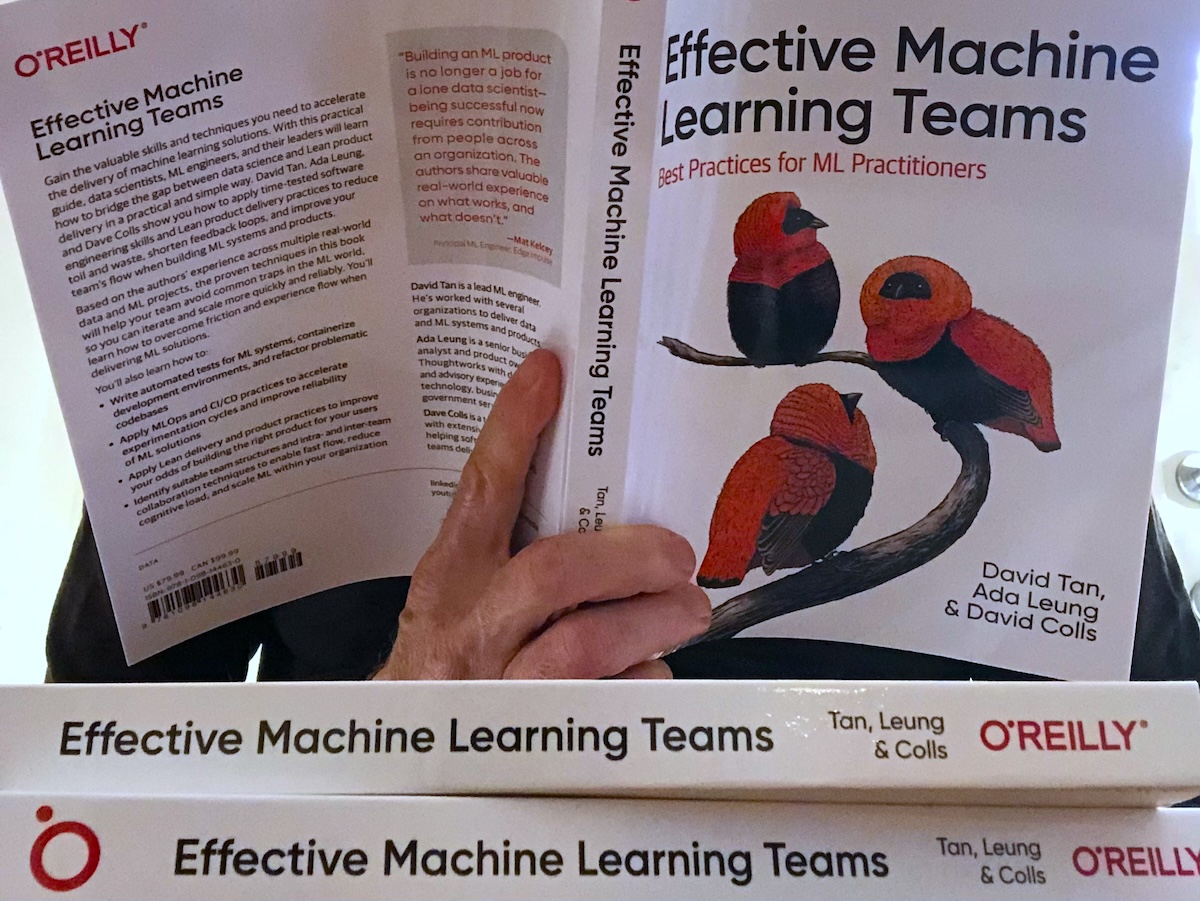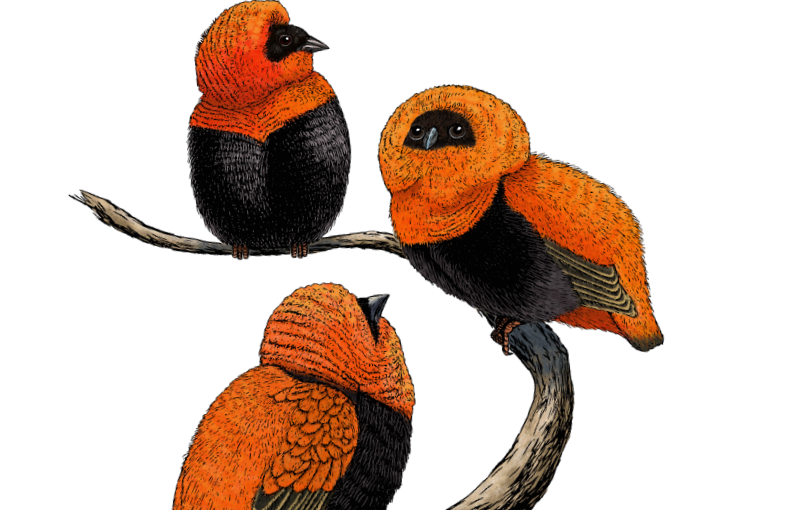Category: Media
-

Hopsworks and multidisciplinary ML
I recently had a brief but fun chat with Hopsworks about the multidisciplinary nature of building machine learning products, as part of their 5-minute podcast series hosted by Rik Van Bruggen. See the transcript and video at 5-minute-interview-with-david-colls-nextdata. Rik and I talked about how David, Ada and I address this multidisciplinary perspective in our book…
-

Effective ML Teams on Thoughtworks Tech Podcast
I recently recorded an episode of the Thoughtworks Technology Podcast with my Effective Machine Learning Teams co-authors Ada Leung and David Tan, hosted by Scott Shaw and Ken Mugrage. The episode is number 146 – Building at the intersection of machine learning and software engineering. It was great to chat about the book and share…
-

EMLT Q&A
A fun Q&A with Thoughtworks on the drivers, key messages and writing process for Effective Machine Learning Teams (EMLT) with my fellow authors Ada and David. It’s neat to be featured alongside all the other many great books from Thoughtworks authors. Find the book, trial and purchase options at O’Reilly, and find yourself a nice…
-

Effective Machine Learning Teams in print
My book Effective Machine Learning Teams is now in print! Building ML solutions requires multi-disciplinary collaboration. EMLT shows how to use design practices to identify the right products, how to apply good data science and software engineering practices to build products right, and how to structure ML teams and organisations so that they are right…
-

Effective Machine Learning Teams
I’m very excited to be writing a book with my colleagues David Tan and Ada Leung. The topic and title Effective Machine Learning Teams was born from our combined work on team technical and delivery practices, and wider organisational patterns, applied to developing machine learning applications. The book has two landing pages where you can…
-

Getting serious about testing AI
I was delighted to contribute to a Thoughtworks’ insights article on AI testing in response to Forrester’s recent report It’s Time To Get Really Serious About Testing Your AI. The report rightly raises the importance of testing in AI systems and highlighted Thoughtworks’ Continuous Delivery for Machine Learning (CD4ML) approach. The response also discusses other…
-

Privacy puzzles
I contributed a database reconstruction attack demonstration to the companion repository to the excellent book Practical Data Privacy by my colleague Katharine Jarmul. My interest was piqued by my colleague Mitchell Lisle sharing the paper Understanding Database Reconstruction Attacks on Public Data from the US Census Bureau authors Simson Garfinkel, John M. Abowd, and Christian…
-

Perspectives edition #27
I was thrilled to contribute to Thoughtworks Perspectives edition #27: Power squared: How human capabilities will supercharge AI’s business impact. There are a lot of great quotes from my colleagues Barton Friedland and Ossi Syd in the article, and here’s one from me: The ability to build or consume solutions isn’t necessarily going to be…
-

Electrifying the world with AI Augmented decision-making
I wrote an article about optimising the design of EV charging networks. It’s a story of work done by a team at Thoughtworks, demonstrating the potential of AI augmented decision-making (including some cool optimisation techniques), in this rapidly evolving but durably important space. We were able to thread together these many [business problem, AI techniques,…
-

Data Mesh Radio
I joined Scott Hirleman for an episode (#95) of the Data Mesh Radio podcast. Scott does great work connecting and educating the data mesh community, and we had fun talking about: Fitness functions to define “what good looks like” for data mesh and guide the evolution of analytic data architecture and operating model Team topologies…